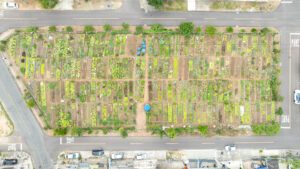The Forest Compensation Program was developed based on prior requirements for establishing planning and management of activities, seeking continuous improvement of the process, with the following objectives:
- To comply with legal regulations, Forest Compensation Programs and other requirements related to the allocation and/or forest recovery of areas that aim to compensate for the impacts of vegetation suppression for the installation/operation of projects, provided for in environmental studies and/or in the environmental conditions of the respective licenses;
- Compensate for vegetation suppression for the implementation/operation of the Company’s projects, seeking to restore ecological processes in relevant areas;
- Seek improvements in restoration processes, optimizing costs and deadlines, and,
- Contribute to the preservation of ecosystem support and regulation services provided by preserved/restored areas.
Focusing on the environmental aspect, the main benefit of forest compensation actions is to maintain or recover areas in the same proportion or in a greater proportion than the areas affected by vegetation suppression necessary for the implementation or operation of the projects.
It is important to note that the environmental studies carried out always seek to direct projects to areas where the percentage of vegetation removal is as low as possible, in areas already altered by anthropogenic activity, minimizing the impact on legally protected areas, such as Conservation Units, Legal Reserves and Permanent Preservation Areas.
On the other hand, in order to define areas for forestry compensation, in the case of actions that seek to maintain or conserve an area of native vegetation, those that present the best environmental conditions are listed and, subsequently, many of these are given protection measures such as registration on the property where they are located.
As for compensatory planting, as a rule, priority is given to connecting forest fragments, which can serve as ecological corridors, or incremental areas to existing fragments, using native species, improving their condition over time as a habitat and as a basis for other ecosystem services.
The list of native flora species used in Copel GeT’s forest compensation projects can be accessed here.






